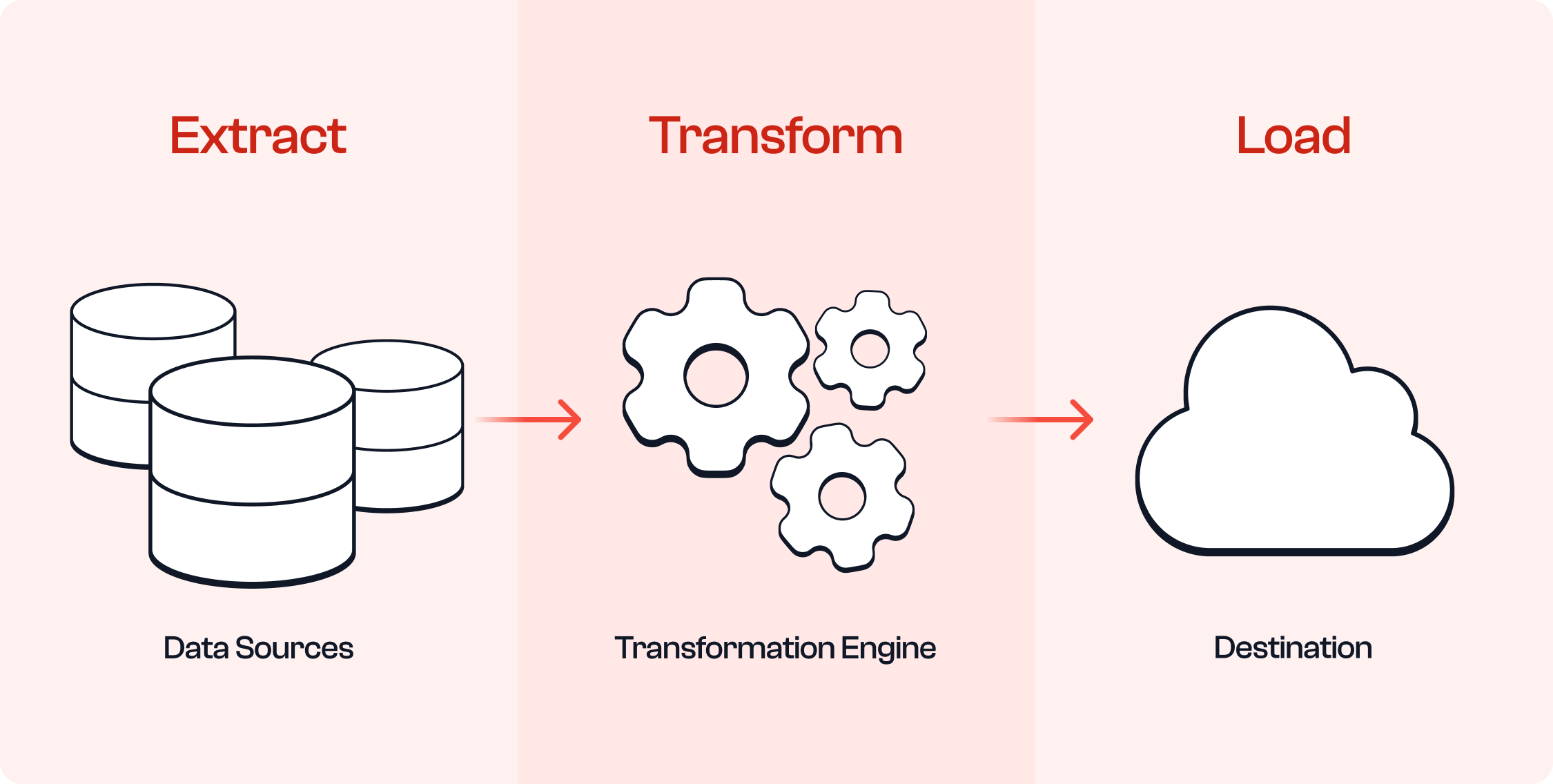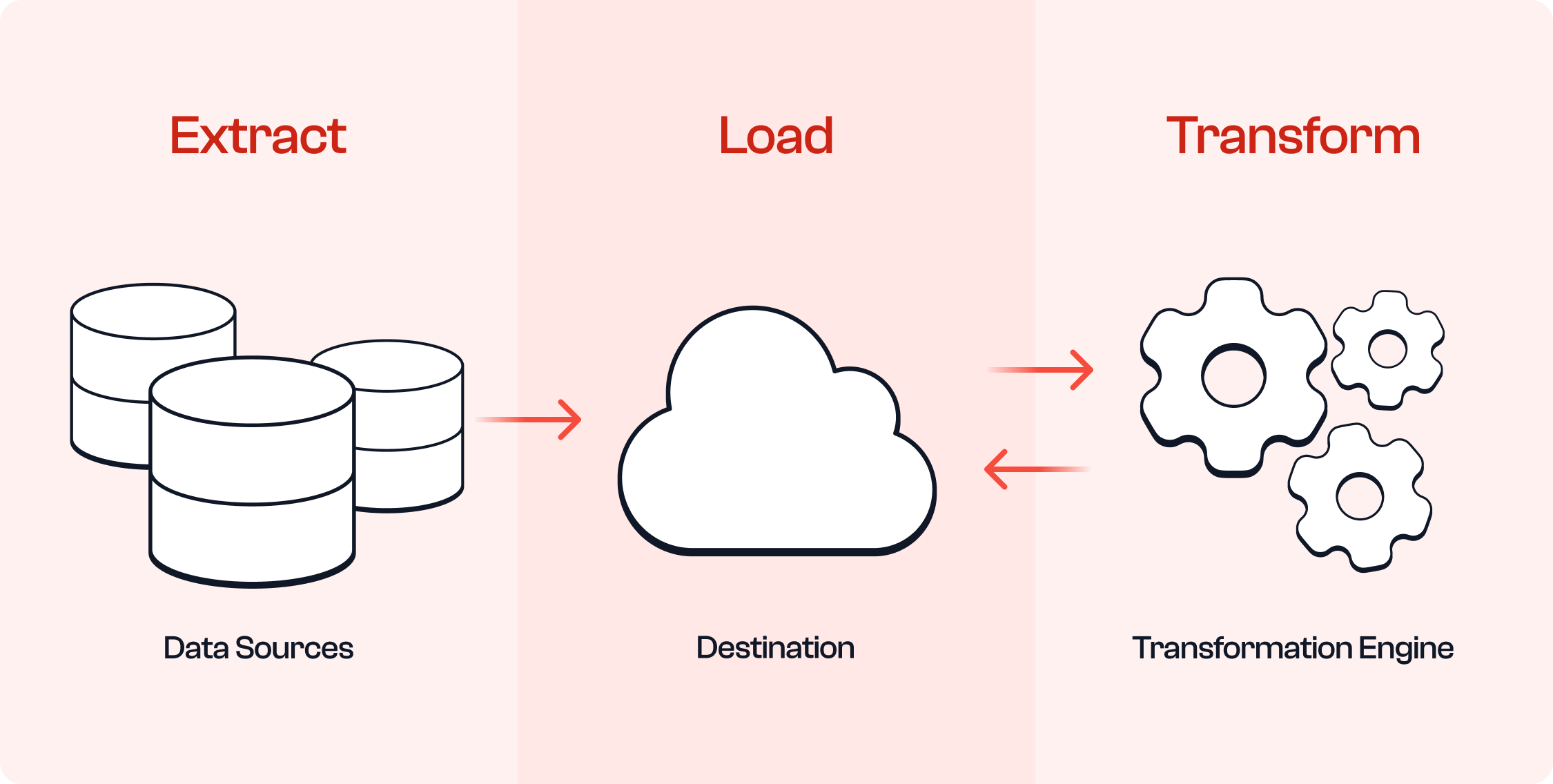ETL vs ELT: Explained

Introduction
ETL (Extract, Transform and Load) and ELT (Extract, Load and Transform) are data integration methods used to collect data from multiple sources to a central destination. ETL transforms data before storing it while ELT transforms data after it is stored in the central repository. In this article we explore the trade-offs between ETL and ELT and why ELT is becoming more popular than ETL in recent years.
What is ETL (Extract, Transform, Load)?

ETL is a traditional data integration process that gathers data from various sources, transforms it through staging tables or predefined steps, and then loads it into a data warehouse or repository. This method emphasises the transformation of data before it reaches its final destination, allowing for the cleansing, aggregation, and organisation of data to fit specific analytical needs. Originating in the 1970s, ETL has become synonymous with data integration, offering a structured approach where data is prepared for analysis before being stored, ensuring that analysts have access to ready-to-use, high-quality data for their reports and dashboards.
What is ELT (Extract, Load, Transform)?

The only difference in ELT compared to ETL is where the transformation takes place. In ELT, the transformation occurs in the destination data storage. ELT leverages the processing power of the destination storage for data transformation. This simplifies the architecture by removing the transformation engine from the source to destination path. The major advantage of ELT is the enhancement in the capacity of the destination store and directly improves the performance of the ELT process. However, the effectiveness of ELT depends on the destination system's ability to handle data transformations efficiently. Cloud data warehouses such as Snowflake, Amazon Redshift, Google BigQuery, and Microsoft Azure all have the digital infrastructure, in terms of storage and processing power, to facilitate raw data repositories and in-app transformations.
Why is ELT the future of data?
1. Efficiency and Speed: In ELT, data is transformed only after being loaded into the destination system. ELT significantly increases the ingestions of data to the destination as there is no transformation stage in between. Analysts can also perform transformations within the data warehouse environment without needing to rely on data engineers.
2. Raw Data: ELT stores raw data directly in the destination system unlike ETL, offering an auditable source of truth and eliminating the need to reload or re-source data to support new use cases. This approach ensures data integrity and speeds up the process to support new formats of data, as the original raw data is readily accessible for re-transformation if needed.
3. Large Volume: ETL is suitable for small data sets that require very complex transformations. But ELT is ideal for larger data sets with more emphasis on getting real-time data for analysis.

